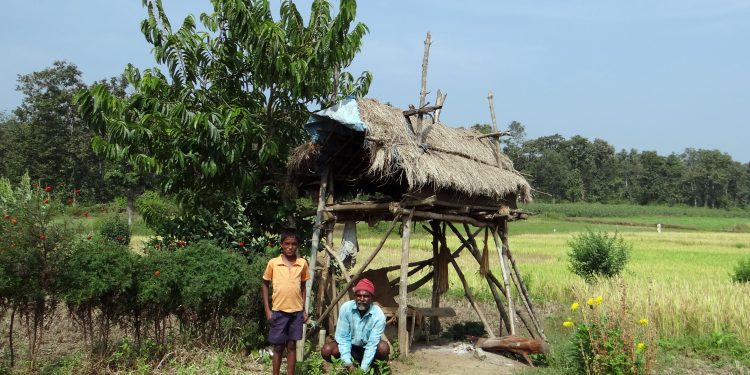Farmer Suicides and Loan Waivers: How Long Will We Band-Aid the Problem?

Recently, a large scale protest was organized at Jantar Mantar in Delhi. This protest saw farmers from various states like Madhya Pradesh, Tamil Nadu, Uttar Pradesh, Punjab, Haryana, and Telangana come together to show solidarity with the five farmers who lost their lives in a police agitation in Mandsaur. The farmers, under the aegis of the organization called All India Kisan Mazdoor Sabha (AIKS), called for a ‘farmer suicide free’ India. Just what were these farmers demanding and why is it important?
The Problem
Farmer suicides shot into spotlight in the late 1990s when a sudden spike in the numbers was noticed. Since then, they have become a frequent occurrence, with public attention waxing and waning according to the severity and shock of the situation as outlined by the media. The actual problem however, has only exacerbated as the years passed by.
A study by Madras Institute of Development Studies, which focused on the period of 1997-2005, found that on an average, a farmer committed suicide every 30 minutes. The major problem states recognized by this study are Maharashtra, Andhra Pradesh (including Telangana), Karnataka, Goa, and Madhya Pradesh (including Chattisgarh). Kerala, Assam, Odisha, Gujarat, and Haryana, also face moderate suicide rates among farmers. Farmer suicides, as a percentage of total suicides across the country, during this period were 15.5%, a significant portion.
According to the recent Accidental Deaths and Suicide in India (ADSI) report by NCRB, farmer suicides have witnessed an increasing trend year on year, though official data portrays that the increase is not by much. However, experts opine that there has been a serious underestimation of numbers of farmer suicides due to change in criteria for identification of farmer suicides, and under-reporting by police due to negative publicity. It seems as if the government is reluctant to even acknowledge that there is a serious problem in India’s agricultural sector.
Causes
National Crime Records Bureau has over the years, identified various causes for farmer suicides, such as indebtedness, family problems, drug abuse and alcoholism, illnesses, and farming-related problems (inaccessible irrigation, inability to buy seeds and other inputs, droughts, floods, unseasonal rains, crop failure, etc.). Out of these causes, indebtedness and family problems constitute major reasons for suicides.
Although at the first glance, the causes for suicides as outlined by NCRB appear to be distinct from each other, most of them in one way or another can be related to the primary cause: agrarian-crisis.
Despite 70 years of Independence, apart from a few states, most of rural India is dependent upon monsoon for irrigational purposes. Green Revolution only benefitted a few states, and in the long run had an adverse impact on environmental health which has caused problems of its own. Farm mechanization is lagging, and there is a lack of forward linkages (access to storage, markets). All these factors combine to ensure that agricultural productivity fluctuates, and is generally lower than the world average. Thus, the earnings of an average Indian farmer are not enough for him to ensure access to basic amenities of life for himself and his family. This leads to unfulfilled needs and aspirations which cause family disputes, alcoholism and drug abuse, debt trap etc, all causes identified above as causes of farmer suicide.
But Why Now?
Agrarian crisis has been an ongoing situation, but this problem has been further compounded by government policies such as Minimum Support Prices, and export bans. Due to fluctuations in monsoon, variations in agricultural productivity are high. Thus, at times markets face shortage of food, and at other times, a surplus.
The years 2014 and 2015 were years of drought. To meet the needs of the consumers, the government allowed import of food at minimal or no duty, and banned export of food grains. Thus, producers lost an important and beneficial market. Grains sold at prices higher than that announced as MSPs, however due to general crop failure due to drought, the only people who were able to gain were people who had access to modern irrigational facilities and inputs. This number is admittedly low. Small and marginal farmers accumulated debt during this period.
2016 was a good monsoon year, and agricultural produce was generally surplus. However, demonetization induced a deflation in food prices. Meanwhile, operation of export ban and low import duties continues, which meant that the Indian farmer has to compete with foreign agricultural produce. Thus food grains and horticultural produce sold at prices lower than announced MSPs, indicating failure of government procurement services (a failsafe for situations exactly like this). The average farmer thus, has suffered a loss. The current ban on cattle slaughter and restrictions on sale of cattle have further exacerbated the problem, as the burden of liabilities on farmers has increased.
Effectiveness of Loan Waivers as a Solution
A major problem with agriculture is that it is a state subject. Thus, it is the responsibility of each state to deal with it separately, and while the Central Government can formulate schemes and policies to help the farmer, their implementation depends on the State. The Central government has rolled out various schemes to help the farm sector, in fields such as irrigation (PMKSY), crop insurance (PMFBY), soil improvement (soil health card) etc. However, their implementation varies from state to state, and factors ranging from geography to bureaucracy influence them.
Due to political reasons however, States resort to quick appeasement of farmers (constituting a major vote bank) through loan waivers rather than addressing the root cause, which would require years of sustained effort. Loan waiver announced in UP by its CM has started a wave of agitations by farmers in other states asking for similar waivers, while suicides continue. The reason for this demand is of course indebtedness, which remains unresolved despite a good year.
Interestingly, out of suicides due to indebtedness, 80% of the suicides in 2015 were due to harassment by recovery agents for loans due to banks and registered microfinance institutions. Only 9.8% farmers who committed suicide were due to loans taken from village moneylenders, who are generally blamed for trapping farmers into a vicious cycle of debt.
However, it was found that village money lenders are more flexible than banks and financial institutions, where rules do not permit leniency. Indeed, banks have been reported to resort to goons to pressure the borrowers into repaying the loan. Social pressures created due to self help groups are also create debilitating helplessness amongst the borrowers. This is a key reason for the continuing attractiveness of moneylenders as source of farm credit.
Thus, while many states such as Maharashtra, Punjab, and Tamil Nadu have indeed waived loans of farmers accruing to banks and financial institutions, they may not help with a majority of farm debt. Also, like the temporary band-aids they are, they hardly address the underlining hardships, uncertainty, and bleak prospects of agriculture which are the real cause for rural poverty. Thus, they are ineffective against farmer suicides. Indeed, Maharashtra saw 42 farmer suicides in the two weeks after the loan waiver was announced.
Conclusion
Farmer suicides are a symptom of a deeply rooted agrarian crisis that has been occurring for more than a decade. If unaddressed, this could lead to rising unemployment, illiteracy, food shortage, and import dependence, especially for a country which is facing population explosion. It is for this reason that farmers have been agitating at Jantar Mantar. The agricultural sector need better policies and a prolonged and protracted effort from the government to revive itself and achieve its potential. Only when farming is prosperous for the farmers, will India see a true and sustainable growth.
[Image Attribute: sarangib]



